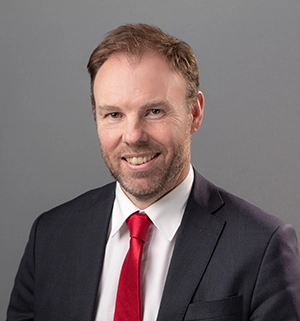HR often strategises about how to make work more productive. But productivity isn’t predicated on flashy policies or initiatives. It comes down to how we design work.
How can we make work more productive? It’s the (multi) million dollar question coming from many executives. After all, enhanced productivity will reap benefits for your bottom line, your culture and your retention levels.
But productivity doesn’t happen organically – it’s an intentional process grounded in understanding your people, helping them to feel like they belong and making sure they’re engaged.
Designing more productive workplaces requires questioning the way things have always been done, asking for input, and measuring what success looks like.
At the last day of AHRI’s Convention, three experts weighed in on how we can make work more equitable, resilient, and, ultimately, more productive.
Work smarter, not harder
Productivity is fundamental yet fundamentally misunderstood, says Michael Brennan, Chair of the Australian Productivity Commission.
“People think productivity is about working harder, or bringing extra effort out of the workforce to try and get extra output or profit. But that’s not it at all,” he says.
“Fundamentally, productivity is about working smarter. More specifically, it’s about finding new and better ways to do things that allow us to produce more with less.”
A great example of this is seen in the agriculture industry, he says.
We’re producing much more than we did 100 years ago, but the number of people required to do the work has decreased significantly due to technological advancements.
However, in the case of the services industry, which is where 90 per cent of the Australian economy works, we can’t mass-produce services at scale.

Instead, increasing productivity must be driven on a smaller scale. This could include: small-scale innovation, removing routine tasks or finding solutions to get work done better, cheaper and more efficiently, says Brennan.
So how can HR professionals influence this change? The first way is by giving your employees the space and autonomy to be more innovative.
For example, you could find ways to automate routine tasks to free up their time to focus on new ideas. Alternatively, you can provide technology that helps them do their jobs faster, or that gives them autonomy to craft their roles so they feel more psychologically involved.
Another way HR professionals can design for the future is through hybrid work.
HR leaders will be crucial in making work from home more productive and pushing for innovation, says Brennan. “There are unlimited versions of the hybrid model. The HR function needs to be in the driver’s seat.
“Now is the time to push towards just being a little bit more entrepreneurial, trying a few things out, and see what works for your individual company.”
What does good job design look like?
A crucial part of designing a more productive workforce is creating more stimulating jobs.
When we talk about work design, we’re not referring to the aesthetic stuff, like the office layout or furniture.

Job design refers to how we define and designate tasks and responsibilities that make up a person’s day-to-day experience of work. Done well, job design can keep a person engaged, help them feel more innovative and mobilise them to do their best work.
But done badly? That’s where you start to see low productivity, poor retention, absenteeism, or, in the worst case, mental and physical health issues.
The good news is that HR professionals have the influence to make work better thanks to strategic job design, says Sharon Parker, Professor of Organisational Behaviour at Curtin University.
Parker’s SMART model breaks down five work design factors – stimulating, mastery, agency, relational and tolerable – and shows how designing work to account for them will make your people more productive and engaged.
But it will rely on your ability to be honest, identify what’s working, what’s not and invite feedback from all parts of the workforce, says Parker.
Read more about Parker’s SMART work design model.
Equitable workplaces
Productive workplaces are made up of humans who feel like they can be themselves at work and are celebrated for what they add to the culture. In a word: equity.
“The only way to focus on equity is by designing for it. That is how we create change,” says Aubrey Blanche, Senior Director of Equitable Design, Product and People at Culture Amp.
That said, designing work to be equitable is more complex than announcing that you care about diversity and inclusion, organising bias training and scheduling a bunch of social events, says Blanche.
It’s only when you put budget, headcount and time behind that intention that it will make a difference.
After you commit to creating a workplace where everyone can thrive, you need to change your mindset to design policies with the most marginalised groups in mind.
For example, Blanche shares how Culture Amp recently developed leave policies around two personas: a queer person with a chronic illness and a woman of colour experiencing domestic violence.

“We hope that no one is going through these circumstances. But we recognise that those are the people who are at the margins… of our society and in our workplaces.
“Only once you account for all these different kinds of experiences can you create change that will benefit more people.”
Blanche also shared four design principles HR could apply to all kinds of work scenarios, such as hiring, meetings or performance reviews.
1. Consent: Be aware of the implicit and explicit power dynamics at play when you ask people to do work for you, says Blanche.
For example, if you are engaging employees to run Employee Resource Groups, if you’re not paying or recognising them, you’re wielding your implicit power over them. Recognise the extra work, carve out time in their workload for them to focus on it and, most importantly, pay them for it.
2. Marginality: Solve for the edge case and build things that genuinely work for everyone.
“Just like product designers, don’t think about the average user, but the user who might have the most trouble. That way, they’re building something that works for everyone.”
3. Community: Understand and measure the different communities you operate in. Collect robust demographic data and understand what their experience is. That said, don’t assume you understand what communities need to thrive, says Blanche. Ask them what they need.
4. Progression: You can’t expect to get everything 100 per cent right immediately, says Blanche. Try to get one per cent better every day.
“It’s not about doing everything at once. It’s about doing something every time you have the opportunity,” she says.
Feel comfortable knowing that you won’t have the right answer to every question, and be open to learning and always ask questions.
You can apply these principles to every element of work, says Blanche. For example, if you’re designing a job ad, make note of any cognitive biases you might be baking into your ad. She recommends adding a paragraph to the ad that reads something like this:
“Did you know that underrepresented and marginalised people are unlikely to apply for jobs unless they meet 100% of their requirements? Even if you don’t meet all the requirements listed, we would love for you to apply so we can check out your skills.”
“Design processes for those on the margins of our society – and ultimately our workplaces. When you build policies that work for them, they’ll also work for other people who don’t have those kinds of marginalisation.”
Putting it into practice
Think of workplace design as the part of the iceberg that’s underwater. The underlying cause of the challenges your people may experience – such as loneliness, unfulfillment or frustration – often arise from the job design, as much as the other policies you have in place.
Designing a more productive workplace means building a healthier one – a workplace where people feel safe to be themselves and empowered to contribute, innovate and share.
For HR professionals, this doesn’t mean having the solutions all the time. That’s impossible. Instead, it’ll come down (as it always does) to people – their backgrounds, experiences and motivators. So ask them what they need to get more enjoyment at work, then create changes that will help and test them.
“You don’t have to know the answer,” says Blanche. “But you have to know how to find out.”

